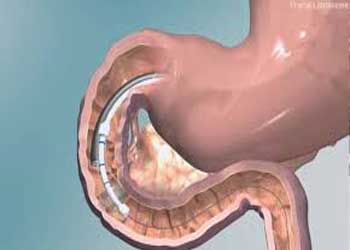- Home
- Editorial
- News
- Practice Guidelines
- Anesthesiology Guidelines
- Cancer Guidelines
- Cardiac Sciences Guidelines
- Critical Care Guidelines
- Dentistry Guidelines
- Dermatology Guidelines
- Diabetes and Endo Guidelines
- Diagnostics Guidelines
- ENT Guidelines
- Featured Practice Guidelines
- Gastroenterology Guidelines
- Geriatrics Guidelines
- Medicine Guidelines
- Nephrology Guidelines
- Neurosciences Guidelines
- Obs and Gynae Guidelines
- Ophthalmology Guidelines
- Orthopaedics Guidelines
- Paediatrics Guidelines
- Psychiatry Guidelines
- Pulmonology Guidelines
- Radiology Guidelines
- Surgery Guidelines
- Urology Guidelines
Novel same day minimally invasive procedure to prevent diabetes progression

HOUSTON: The University of Texas Health Science Center at Houston (UTHealth) shall investigate a same-day minimally invasive procedural to improve glucose control for Type 2 diabetes patients in a pilot study.
Absalon D. Gutierrez, MD, and Nirav C. Thosani, MD, are among the first physician-researchers in the country to assess the safety and effectiveness of The Revita™ System, designed to help improve blood sugar levels without the need for additional medications. The Revita DMR procedure aims to potentially prevent or even reverse disease progression for patients with diabetes and related conditions
According to the Centers for Disease Control and Prevention (CDC), nearly 30 million Americans, including close to 3 million Texans, now have diabetes, a disease that causes high blood sugar. Type 2 diabetes affects 90 to 95 per cent of all diabetes patients.
The RevitaSystem, a device created by Fractyl Laboratories Inc., is operated by a gastroenterologist for duodenal mucosal resurfacing (DMR), which is the modification of the lining in the uppermost part of the small intestine. The device consists of a console and a heated balloon catheter that is inserted transorally into the duodenum to break down its lining so it can regenerate and correct abnormal hormonal signalling and nutrient absorption.
“Recent studies on bariatric surgery have shown that prevention of nutrient contact with the duodenal mucosal surface results in a prompt and sustained insulin-sensitizing effect, and DMR is designed to mimic that metabolic benefit,” said Gutierrez, the Houston principal investigator and assistant professor in the Division of Endocrinology, Diabetes and Metabolism at McGovern Medical School at UTHealth.
“Modifying the duodenal mucosa has the potential to alter the body’s ability to respond to sugar and restore metabolic health by targeting insulin resistance, a condition in which muscle, liver, and fat cells do not use insulin well,” Gutierrez said.
“Since Type 2 diabetes is the most common form of the disease, being able to treat it with a same-day procedure could be life-changing for so many of our patients,” said Gutierrez. “There are many drug therapies available, yet a majority of patients in the U.S. aren’t able to control their blood sugar. We’ve got to start considering alternative solutions, and I’m thrilled to be a part of the critical research.”
Poorly controlled blood sugar can lead to a variety of complications, including heart disease, stroke, high blood pressure, neuropathy, and glaucoma. According to the CDC, diabetes is also the leading cause of nontraumatic lower-limb amputations, kidney failure, and new cases of blindness among adults in the U.S.
“Type 2 diabetes is a challenging illness to manage, in part because we’re not able to treat the underlying mechanisms of the disease,” said Thosani, co-investigator and associate professor in the Division of Gastroenterology, Hepatology and Nutrition at McGovern Medical School. “Instead of adding more drugs to the patient’s regimen, this intervention has the potential to help the body regulate glucose more efficiently on its own.”
The study is randomized and sham-controlled, meaning only some participants will receive the procedure. UTHealth and four other sites in the U.S. will enroll a total of 18 participants between 28 and 65 years of age. To be eligible, individuals must have been diagnosed with Type 2 diabetes for at least three years, have a body mass index ranging from 28 to 40 kg/m2, and an HbA1C of 7.5 to 9.5 percent.

Disclaimer: This site is primarily intended for healthcare professionals. Any content/information on this website does not replace the advice of medical and/or health professionals and should not be construed as medical/diagnostic advice/endorsement or prescription. Use of this site is subject to our terms of use, privacy policy, advertisement policy. © 2020 Minerva Medical Treatment Pvt Ltd